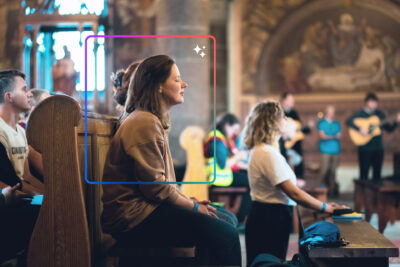
How Technology Helps Us Pray
There are good ways to pray. There are bad ways to pray. And it takes work to pray well. Let me detail a few ways technology helps us pray.
God speaks to us through his Word, the Bible. Amazingly, we have the privilege of speaking to God through prayer. There are good ways to pray. There are bad ways to pray. Our prayers can grow our faith. The selfless prayers of a dedicated Christian can change history. Our prayers can also be misdirected and selfish, for instance when we beg God for things we don’t need. It takes work to pray well, which means anything we can use to help our prayer life is worth considering.
Somewhere between 1950 and 1970, the age of electronics began to change much about the way we live, including how we relate to God. Invented in 1947, the tiny transistor launched a revolution. Radios, calculators, computers, and cell phones wouldn’t exist without the ubiquitous transistor. Today, we live in a world where the number of people who live in homes without toilets exceeds the number of those who don’t have access to a mobile phone.
The science of transistors can be complex, but their practical role in our lives is simple and straightforward: They amplify words and messages. This amplification is what makes hearing aids work, and cell phones too. Transistors help you hear better and more clearly. So I’d like to make a connection here, which is to say that prayer is the transistor of spiritual disciplines. Having a healthy prayer life allows you to hear God better and louder.
Digital Tools Add Discipline to Prayer
Prayer is not only like a transistor, but actual transistors can benefit your prayer life as well. The tiny components inside your digital devices make possible the proliferation of creative applications, including Twitter, Facebook, and texting. In the same way that prayer can be used for purposes good and not so good, our digital tools can be useful or wasteful. Let me detail a few ways technology helps us pray.
1. Twitter lets the masses know immediately
I couldn’t even begin to count how many times I’ve prayed after seeing someone tweet about a need for prayer. A 140-character request for support is much more than just a social media comment. Twitter is a great tool to use when you need to communicate an urgent request. A quick tweet can get lots of people praying immediately.
2. Facebook helps build a sense of community
Nothing can replace the experience of spending time in face-to-face, personal prayer with close friends, but Facebook broadens these circles. Not everyone can be physically present to pray with you personally. Miles of distance, conflicting schedules, and physical limitations may prevent others from praying with you in the same room but, through Facebook, friends and family can pray together in a digital space.
3. Google Keep is one way I remember to pray
It’s a simple tool that manages tasks, lists, and reminders. The promise I most often unintentionally break is when I tell someone, “I’ll pray for you.” To help me remember I began to write down people’s names but, while I don’t always have a pen and pad, I always have my phone. I use Google Keep to record people’s names and requests and I then set a reminder on the note to alert me when to pray for them. The reminder becomes a notification on my phone. I don’t break my promise nearly as often now.
4. Texts are a great way to follow-up with people
After my prayer time, I’ll often text people to let them know I prayed for them. It’s an easy way to reach out and let them know I followed through. If you’re like me, then you’re probably guilty of praying for others without letting them know. A quick text allows others know!
Historically, Christians have used handwritten letters, telegrams, and land-line phone calls to exercise the spiritual discipline of prayer. Technology gives us new tools. Use them to hear God better. Use them to speak more often to Him.
But don’t stop with prayer. Technology can also help with giving, too!






